As site numbers continue to dwindle and more oil company sites move to the independent network, the pumps market will see a flurry of investment from forecourt retailers, according to pump supplier Dresser Wayne UK.
Alistair Clarke, sales & marketing director for Dresser Wayne UK, says: “Independent groups are acquiring forecourts that are no longer required in the multiple oil company networks, and are building their market share regionally, or in some cases, nationally.
“This means that the trend to fewer, busier sites is continuing and a substantial middle ground of dealer groups has emerged. Traffic on the remaining sites is inevitably increasing, and there is an appetite to invest in good quality equipment.”
Legislation and new technology are also an increasing influence on investment decisions. As the arrival of chip and pin approaches retailers will be faced with the decision of upgrading pump equipment to offer pay at pump.
Marc Braun, director of marketing at Gilbarco Veeder-Root, says: “We are seeing real concrete evidence of people gearing up to equip sites with CRINT (card reader in terminal). Major oil companies and supermarkets have their rollout programmes in progress, but I think the independents are just starting to get focused around shop sales so I expect them to be hesitant in putting pay-at-pump on their sites.
“They want people to come in the store, so I don’t see it taking off in the dealer network straight away. But if not having pay-at-pump is starting to take away customers, dealers will be faced with the decision whether to upgrade, which will cost around £4,000 per dispenser.”
If a card reader cannot be mounted in the dispenser, outdoor payment terminals can be installed. Mike Piggot, general manager of Tokheim UK, explains: “The card reader – either mounted in the dispenser or the outdoor payment terminal – acts as a slave to the host controller in the kiosk. The controller in the kiosk carries out all the intelligence and authorises the dispenser for filling the vehicle.
“Taking pay-at-pump one step further allows the opportunity for 24-hour fuel dispensing – unmanned petrol filling stations will begin to come into the UK market over night,” adds Piggot. “This will give retailers an opportunity to reduce employee costs while still selling fuel and will result in increased margin for the retailer.”
VBi, together with Dresser Wayne, has been developing the outdoor payment system it obtained last May through the acquisition of Meggitt Petroleum Systems (MPS).
In addition to compatibility with the most popular pump types and compliance with chip and pin, the Illumina range is available in two formats – Access or Access+ (with the latter incorporating a touch-screen).
Access+ is adaptable to a retailer or forecourt manager’s specific needs and the touch screen can work as a powerful marketing tool, displaying both still and streaming images to promote shop goods and forecourt services. It also supports paid advertising opportunities.
Illumina is designed to eliminate single point of failure on the forecourt and enables the option of unmanned forecourt operation.
VBi director, Simon Hollingsworth, says: “When we acquired MPS, the Illumina had been in development for a long period of time. On examination of the product design we took the decision to re-engineer it to operate on the latest Windows platform and to reduce the hardware cost. In doing this we have developed an extremely robust and reliable design. This re-design also enabled us to incorporate chip and pin options in parallel.”
ALTERNATIVE FUELS
The Chancellor’s decision to increase the duty on LPG in his last Budget has caused a bit of a stir in the industry. Matthew Carrington, chief executive of the Retail Motor Industry Federation, said that the one-pence per litre increase on LPG in each of the next three years could spell the beginning of the end for the fuel in the UK.
“It could be a death-blow for the fledgling LPG market, and could destroy public confidence in the viability of all alternative fuels,” he said. “There is now little incentive to invest in LPG, either as a motorist or as a fuel business. The duty rise has negated any financial saving that could be made from using the fuel. Originally the duty on LPG was set low to allow the sector to grow, with the proviso that once the market for the fuel reached critical mass, the duty would be brought in line with conventional fuels. Although there are currently 1,400 refuelling sites stocking LPG, and 100,000 cars powered on it, the market is still far from that point.”
And in August last year, BP’s retail director Graham Simms said that BP was putting the brakes on its LPG programme because of a lack of clarity about the government’s environmental strategy. “I’m not making a political statement, but as a businessman I’m finding it difficult to predict where we’re going,” Simms told Forecourt Trader. “I’ve had to slow down my LPG programme because with subsidy being withdrawn, I can’t afford it. It takes me 10 years to get payback on an LPG pump.”
While the full impact of the Government’s decision to increase duty on LPG remains to be seen, the pumps industry is still upbeat about the fuel’s place on UK forecourts.
“I haven’t seen any direct effect of the increase in duty on LPG,” says Gilbarco Veeder-Root’s Marc Braun. “Given that there are European Directives to move from mineral oil fuels to biodegradable fuels, LPG is a big part of that, and I don’t see how taxation will stand in the way. LPG is certainly not in decline.”
As such, pump manufacturers have been busy developing LPG dispensers. Dresser Wayne, for example, has developed a back-to-back LPG version of the Opus pump. And last year, Gilbarco Veeder-Root launched the SK700 Combi dispenser, allowing motorists to fill up with LPG and unleaded at the same dispenser.
Other alternative fuels are also on the horizon. “I think we will see more alternative fuels such as compressed natural gas (CNG) – there are about 3-400 sites in Germany and Italy selling CNG, which is a real alternative to LPG in the not too distant future,” says Braun. “CNG has to be handled at less than 300 bars of pressure so special equipment is required to be put in the tank. But emissions on CNG are a fifth of regular fuels. And while hydrogen is only in trials right now, by 2010 there will be a number of sites in the UK with hydrogen.”
Meanwhile, Alistair Clarke says that Dresser Wayne continues to research the market for alternative fuels and respond to changing forecourt requirements. “Dresser Wayne delivered the first dispenser in Europe for the new HGV emission control additive Adblue,” he says. “Adblue tanks will begin to be part of heavy goods vehicle manufacture as the manufacturers respond to demanding EC emission control directives.”
Adblue is a combination of water and Urea and therefore requires a rethink of current pump design. The Adblue pump is part of the Global Star range and has heating elements built in to protect the water-based fuel from low temperatures. The door enclosure on the nozzle assists in avoiding misfueling accidents. A back-to-back version of the Global Star is also available to provide diesel and Adblue at the same position.
VAPOUR RECOVERY
Vapour Recovery Stage II is still in consultation but is expected to be legislated by 2010. Most of mainland Europe is already using the equipment – and Germany has even gone one step further. The industry in Germany found that Stage II equipment was failing after a few years so the government has imposed a regulation where retailers have to monitor the equipment. That takes effect this year.
“We’re expecting that to spread to other countries,” says Gilbarco Veeder-Root’s Marc Braun. “Monitoring will be an extra investment – probably another 1,000 to 1,500 Euros on top of Vapour Recovery equipment. But it’s understandable to look at how much vapour is being put out into the atmosphere – it’s huge volumes with all the sites combined. Environmental regulations and alternative fuels are a way of getting emissions down.”
And according to Mike Piggot at Tokheim UK, Stage II will result in a number of dispensers either being obsolete or needing an expensive upgrade to meet legislation. The company recommends that customers carefully consider their options before purchasing reconditioned dispensers. “We strongly recommend that the customer obtains a written commitment from their supplier in terms of the costs to upgrade their dispensers in the future to meet the requirements of Vapour Recovery Stage II,” says Mike Piggot.
REFURBISHED SYSTEMS
Investment in new pumps is costly but many companies offer the smaller retailer refurbished systems at an affordable price. “Refurbished pumps offer easy re-pumping access to many smaller fuel sites,” says Barry Jenner, sales director at Cameron Forecourt. “Shabby looking fuel pumps do not invite custom onto the forecourt. Replacing older pumps does not necessarily mean that the fuel will be dispensed any more efficiently, but the rejuvenated look of the site will make it more attractive to a wider audience.”
But Jenner adds that refurbished fuel pumps should be put into perspective. “The reason that they are available to be refurbished is because they have generally been retired from another site and will have had an active previous life,” he says. “While properly refurbished equipment can operate reliably for a considerable time, the general idea of refurbishment is to economically update equipment and rejuvenate the forecourt, and therefore busy sites should seriously consider replacing older equipment with new to give the maximum performance and reliability.”
Properly refurbished pumps should have been stripped down and refurbished at major component level. Seals require replacing, electronic boards need to be professionally serviced and tested and the frames need to be treated and painted.
Cameron Forecourt has its own refurbishment programme and can offer a range of pumps including Gilbarco, Tokheim and Pumptronics. It also offers factory-refurbished Series 9000 pumps. The pumps are fully refurbished and tested at the Cameron Forecourt’s factory in Barnsley.
The company also retains the rights to the Pumptronics Series 100 and 200 fuel pumps. The refurbishment programme available on this range can include a full re-clad with new panels where requested. “In many cases the work is so good that the site looks as though it has been fitted with new pumps,” says John Reynolds, retail sales engineer at Cameron Forecourt.
When it comes to pumps, retailers could be faced with important investment decisions over the next year or so. Mike Piggot of Tokheim UK, says: “The service station ergonomics will need to change and more dispensers per site will be required.
“Legislation, £1 per litre and possibly the introduction of the Euro in the UK, will account for the vast amount of site closures. But there is a significant amount of equipment in the UK that cannot be upgraded in order to deal with these issues, so investments will have to happen – it is just a case of when.”


















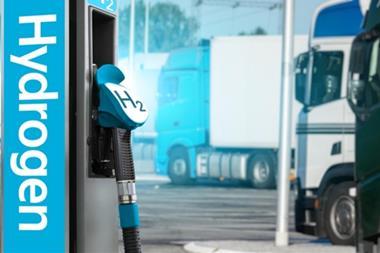
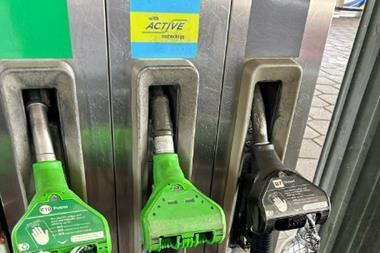
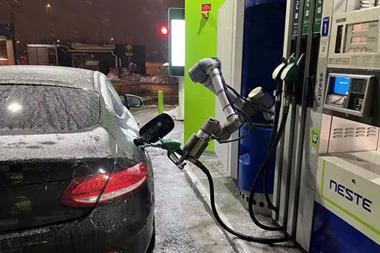

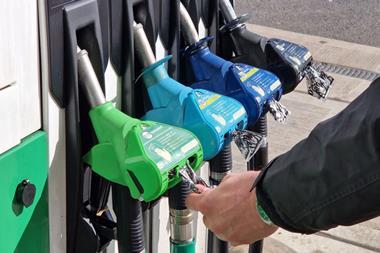
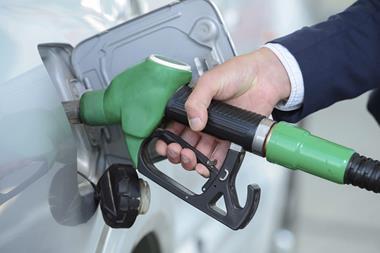


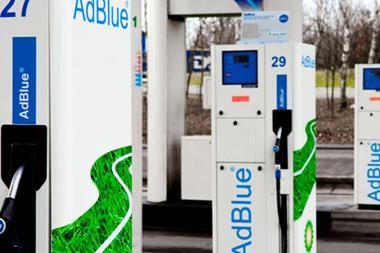
No comments yet